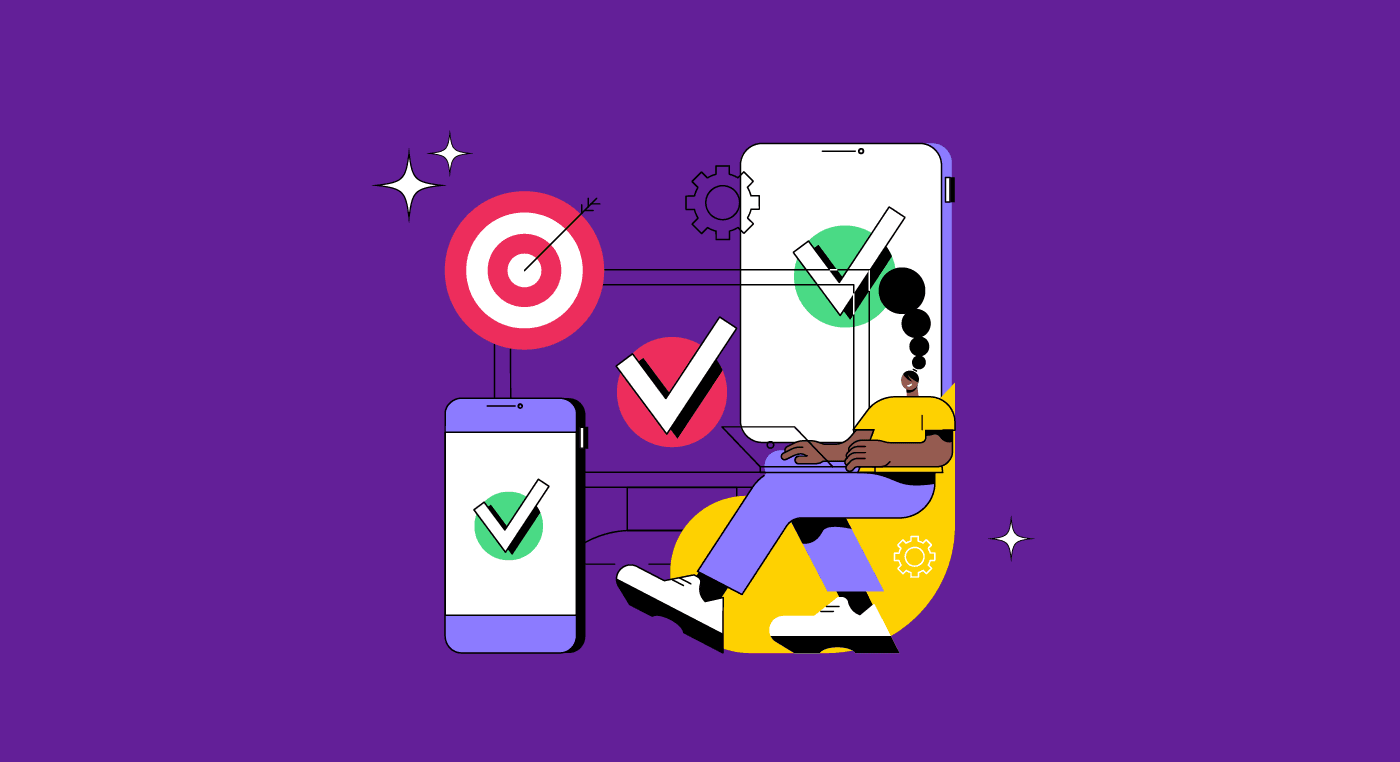Designing for accessibility and inclusion means creating opportunities for everyone in order to promote equality in everyday tasks and situations.
Fortunately, initiatives to promote social inclusion and help raise awareness around this matter are gaining power. But there’s still a lot to conquer, especially when the subject is gaming.
Have you ever noticed how games require certain skills that may restrain access to persons with disabilities? Either because of the lack of subtitles, sound cues, or controllers that are not adaptable.
In this sense, if UX designers and Game developers want to foster inclusivity, they need to start creating different ways to access and navigate games.
It’s also important to remember that inclusive design will result in better products and solutions for future situations. We might forget, but impairments are not only permanent; they can be temporary or situational too.
Over this article, we’ll address the main struggles that people with disabilities encounter in the gaming world, and present a couple of practices to reflect upon.
What is accessibility?
Accessibility is the willingness to create opportunities so that people can overcome obstacles in daily situations.
In this regard, we usually associate accessibility to physical places, like accessible ramps, wide doorways, or tactile surfaces.
But accessibility should be present in all aspects of life, including digital ones.
Ensuring access and inclusion for people with disabilities is vital to UX professionals. Because at the end of the day, promoting digital inclusion creates conditions where more users can use your product.
Additionally, turning products accessible contemplates people with not only some kind of disability but also any person that might be unable to enjoy the full experience due to:
- quiet or very noisy places;
- permanent disability or just a broken arm;
- multiple size devices, whether cell phones, tablets, or computers.
Our focus in the current article is to approach accessibility in digital gaming.
Business and accessibility go hand in hand
The number of people playing video games has surpassed 2,5 billion worldwide since 2019. And according to the website Statista, this figure is expected to rise to over 3 billion gamers by 2023.

Another research carried out in the US only identified that 20% of casual gamers have some kind of deficiency. The number is even greater compared to the total number of people with deficiencies in the US, representing 15% of the country’s population.
So it’s necessary to look at these numbers and challenge the industry to design more accessible games to include people with specific needs.
And yes, the numbers above represent a great business opportunity, but more importantly, accessibility in games is beneficial to society.
Games represent entertainment; people play to relax, have fun, engage with friends, and unplug from reality. Video games can amuse and excite you, taking you to another dimension, to a different world with a new reality.
Additionally, because they can increase gray matter and boost brain connectivity, research shows that video games can improve reaction time, attention, spatial navigation, and even short-term memory in older adults.
One long-term study showed that children who played strategy-based games showed an improvement in problem-solving skills.
Just because someone has a deficiency or a special need doesn’t mean we should exclude them from the ability to have an equal opportunity to play – and learn.
Accessibility in games and UX Design
Keeping in mind the concepts of accessibility and its importance to the game industry, we can relate how UX Design effectively improves this experience.
As professionals in the area, developers and designers should guarantee gaming experiences that reach everyone, despite disabilities.
For the longest time, game developers created experiences based on people with certain sensorial, motor, and intellectual skills.
In this sense, the color schemes, the controllers, the sounds, everything was developed for people who had no disabilities whatsoever.
Therefore, an important step for developing more accessible games is to research, interview, and listen to users with some kind of impairment.
The developers of Naughty Dog, responsible for the game The Last of Us Part II, have listened to their users and designed a game based on their requests.
“For The Last of Us Part II, as far as the features go, we wanted to include [accessibility] the suggestions that came from the fans. We talked a lot to them and eventually decided to invite them into the studio so they could share their experiences with the team and help us in the process of making our game meet their needs.” Emilia Schatz, Naughty Dog
So UX Design in the development of inclusive and accessible games is nothing more than UX Design on its basic fundamentals. Because to come up with solutions, it’s important to establish empathy and talk to users to understand their process, pain points, and needs.
Challenges to overcome

When we talk about disabilities, we should consider the following limitations:
- visual;
- hearing;
- motor and physical;
- cognitive.
Each of these limitations implies specific challenges to the game experience, and they should be addressed during development.
Visual impairment
Visual impairment means any kind of vision loss, whether it’s someone who cannot see at all or someone who has partial vision loss. It also includes people who have some degree of color blindness or difficulty in seeing certain colors.
When developing games for the visually impaired, the challenge will increase according to the level of disability, of course.
Likewise, game scenarios that involve solely visual features – with no audible feedback – generally cause the most difficulty for visually impaired people.
If the player can follow an audio trail, they may rely on sound alone to get through the game. Voice control and audio menus, for example, are great tools to help people navigate through the game. It’s beautiful and exciting to come up with alternatives to make scenarios more accessible.
It’s extremely beneficial to the game industry to listen to the blind community or anyone visually impaired.
Disabled gamers have become increasingly adaptable to play games that were not built for them, having to find workarounds to make games playable. In this sense, they can be seen as expert consultants in game-making and should be included in the early stages of development.
Hearing impairment
Many essential elements of gameplay happen only through sounds – imagine, for example, playing a Battle Royale without the sound of those telltale footsteps. That’s why deaf and hard-of-hearing players need consistent captioning to play games.
In addition, many online games have voice chats conversations so that players and teams can agree on strategies or make observations during the game. Unfortunately, in these situations, people with hearing loss are excluded because they don’t have the necessary tools to take part in these conversations.
Motor and physical impairment
The difficulties involving motor disabilities are closely related to controllers or, in the case of computer games, keyboard accessibility.
People with motor impairments may not be able to use the controls, either because of characteristics that limit or prevent independent movement or full use of one or more body parts or because of limitations in coordination, strength, or agility.
Cognitive impairment
Most cognitive disabilities have a foundation in biology or physiology. Causes can range from traumatic brain injury to genetic disorders and subtle nuances based upon the structure or chemistry of the brain.
In this scenario, the biggest challenge experienced in games is related to the complexity of the gameplay itself.
Video gaming is also a promising intervention for cognitive and social impairment in patients with schizophrenia.
There’s an ongoing study in Honk Kong to test the effectiveness of video gaming on improving cognitive and neurocognitive functioning in people with schizophrenia. The study will offer new insights into the impact of using video gaming on patients’ health and well-being.
Overall, routines complemented with digital games can be beneficial to people with cognitive impairment, helping to develop logical thinking, attention, and responses.
Best practices for making games accessible

Accessibility, therefore, is a huge point to be considered in game development, providing the opportunity to include as many people as possible back in the game.
To assist professionals and bring accessibility closer to the industry, the Game Accessibility website developed a good practice guide for game developers.
The guide is divided into 3 categories: basic, intermediate, and advanced. And the categories, created with three factors in mind:
- Reach (number of people who benefit);
- Impact (the difference made to those people);
- Value (cost to implement).
Each group has sub-categories according to the type of impairment: motor, cognitive, visual, and hearing/speech.
Below, we will cover the outline of best practices according to the respective disability. We encourage you to visit the website if you want to know more.
Motor
The idea is to implement solutions that allow players to use controllers without a hassle, providing better mobility, allowing adjustments in screen sizes and responsiveness.
Thus, some practices that the Game Accessibility Guidelines propose are:
- Allow controls to be reconfigured;
- Ensure that all areas of the user interface can be accessed using the same input method as the gameplay;
- Include an option to adjust the sensitivity of controls;
- Ensure controls are user-friendly or provide a simpler alternative;
- Ensure interactive elements / virtual controls are large and well-spaced, especially on small or touch screens;
- Include toggle/slider for any haptics.
Cognitive
The objective is to reduce the game’s complexity, adding tutorial options, guides, and reminders, including the possibility of replaying narratives and disabling interactive elements.
Some practices proposed by the accessibility guide are:
- Allow the game to be started without the need to navigate through multiple levels of menus;
- Use simple, clear language and text formatting;
- Include interactive tutorials;
- Allow players to progress through text prompts at their own pace;
- Avoid flickering images and repetitive patterns;
- Allow the player to have control over the speed of the texts;
- Make it clear which elements are interactive;
- Allow the possibility of turning off the background movements;
- Include an option for game speed;
- Allow violent and bloody parts to be disabled.
Vision
Accessibility for visual impairments concerns text formatting and colors, good sound quality, and the possibility of audio description.
- If the game uses a field of view (3D engine only), set an appropriate default for the expected viewing environment;
- Avoid VR simulation sickness triggers;
- Use simple, clear text formatting;
- Provide high contrast between text/UI and background;
- Ensure interactive elements / virtual controls are large and well-spaced, particularly on small or touch screens;
Hearing
The main purpose is to ensure that all sounds are accessible either textually or from another tool. This way, the player can have the same experience without listening.
- Provide subtitles for all-important speech;
- Provide separate volume controls or mutes for effects, speech, and background/music;
- Ensure no essential information is conveyed by sounds alone;
- If any subtitles/captions are used, present them in a straightforward, easy to read way;
- Use signs and symbols.
Speech
Accessibility for people with speech disabilities brings practices related to alternatives to voice inputs and chats.
- Ensure that inputs and voice commands are not mandatory;
- Include text chat;
- Include interaction elements that understand limited vocabularies.
In addition to addressing accessibility, the Game Accessibility Guideline also sets out general practices for improving the player experience regarding game difficulty, controls, and general settings.
Good examples of accessibility in games
As seen, accessibility should be a priority in several situations, including game development.
Unfortunately, the scenario is not yet ideal, but inspiring initiatives and projects are happening.
Microsoft
A good example is Microsoft’s creation of the Adaptive Controller for the Xbox One.
This controller is larger, with bigger, programmable buttons, and allows connection to other devices such as computers, external buttons/controls, and joysticks.
In addition, Microsoft has its own Accessibility guide: the XAG (Xbox Accessibility Guidelines), which helps developers make more inclusive games, breaking down barriers for people with disabilities.
The best part is that developers can now send their games to Microsoft and know if what they’re making meets all the requirements described in the guide.
It’s a big step towards inclusion and accessibility, bringing awareness to developer teams in the process of game-making.
The Last of Us Part II
Another example that surprised everyone was the action-adventure game developed by Naughty Dog, The Last of Us Part II.
The game features 60 accessibility settings, managing to address motor, hearing, and visual impairments.
Being a high circulation (AAA) game, The Last Of Us Part II opened the door for game developers and UX Designers to think more about accessibility in their projects.

TLOU II still has some flaws, which can be considered normal, seeing as this is perhaps the first major game to bring that much customization and accessibility in controllers.
As Reid Hoffman’s said: “If you are not embarrassed by the first version of your product, you’ve launched too late.”
The studio holds the record for most Game of the Year awards, including Innovation in Accessibility.
It was a big step for the industry, and we are looking forward to what’s coming next.








